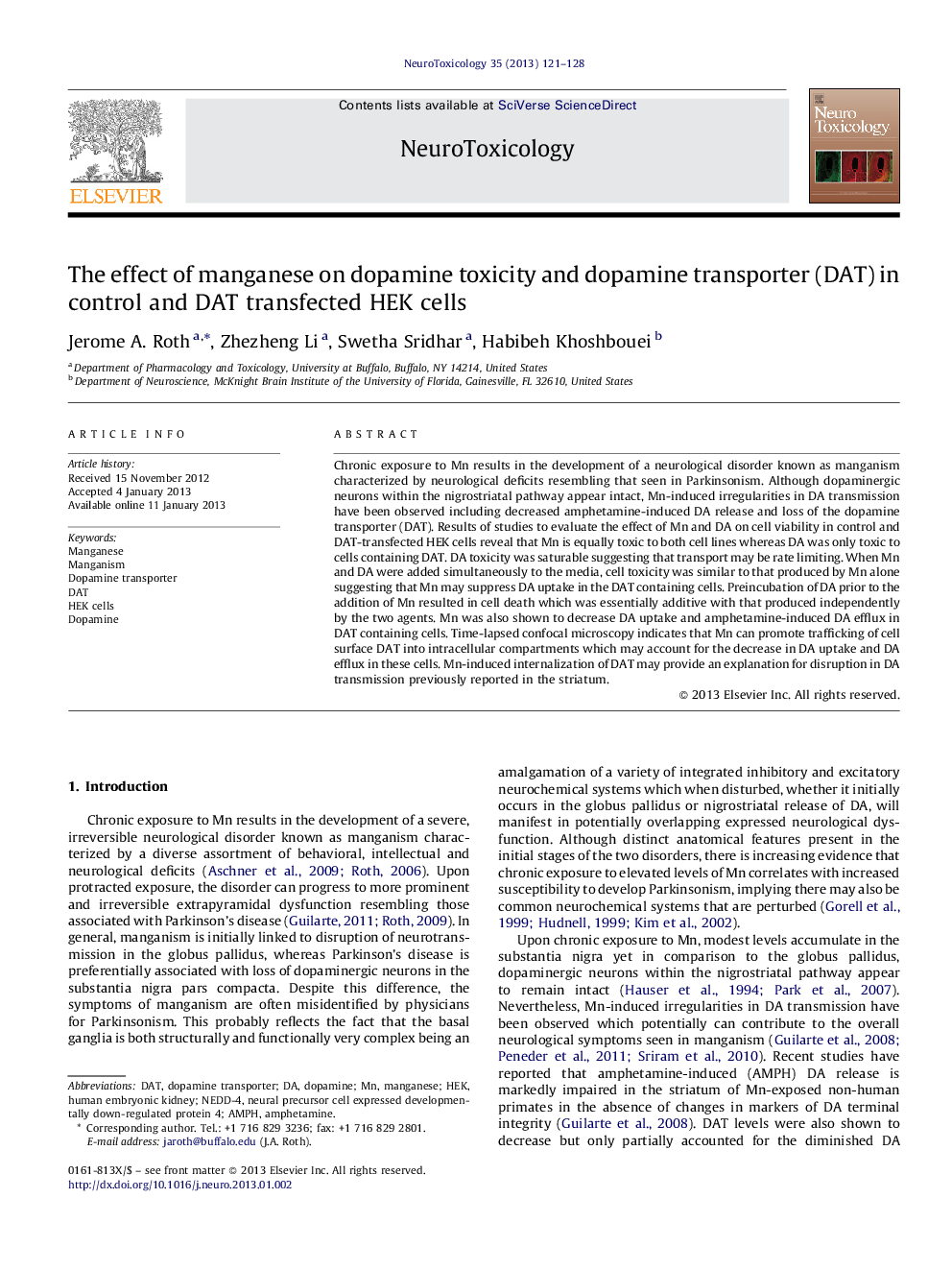| Article ID | Journal | Published Year | Pages | File Type |
|---|---|---|---|---|
| 2589814 | NeuroToxicology | 2013 | 8 Pages |
Chronic exposure to Mn results in the development of a neurological disorder known as manganism characterized by neurological deficits resembling that seen in Parkinsonism. Although dopaminergic neurons within the nigrostriatal pathway appear intact, Mn-induced irregularities in DA transmission have been observed including decreased amphetamine-induced DA release and loss of the dopamine transporter (DAT). Results of studies to evaluate the effect of Mn and DA on cell viability in control and DAT-transfected HEK cells reveal that Mn is equally toxic to both cell lines whereas DA was only toxic to cells containing DAT. DA toxicity was saturable suggesting that transport may be rate limiting. When Mn and DA were added simultaneously to the media, cell toxicity was similar to that produced by Mn alone suggesting that Mn may suppress DA uptake in the DAT containing cells. Preincubation of DA prior to the addition of Mn resulted in cell death which was essentially additive with that produced independently by the two agents. Mn was also shown to decrease DA uptake and amphetamine-induced DA efflux in DAT containing cells. Time-lapsed confocal microscopy indicates that Mn can promote trafficking of cell surface DAT into intracellular compartments which may account for the decrease in DA uptake and DA efflux in these cells. Mn-induced internalization of DAT may provide an explanation for disruption in DA transmission previously reported in the striatum.
► Mn is equally toxic to control and DAT transfected HEK cell whereas dopamine is only toxic to the DAT transfected cells. ► Mn suppresses DA toxicity in the DAT containing cells. ► Mn promotes internalization of cell surface DAT. ► Mn inhibits amphetamine-induced DA efflux in DAT containing cells.
